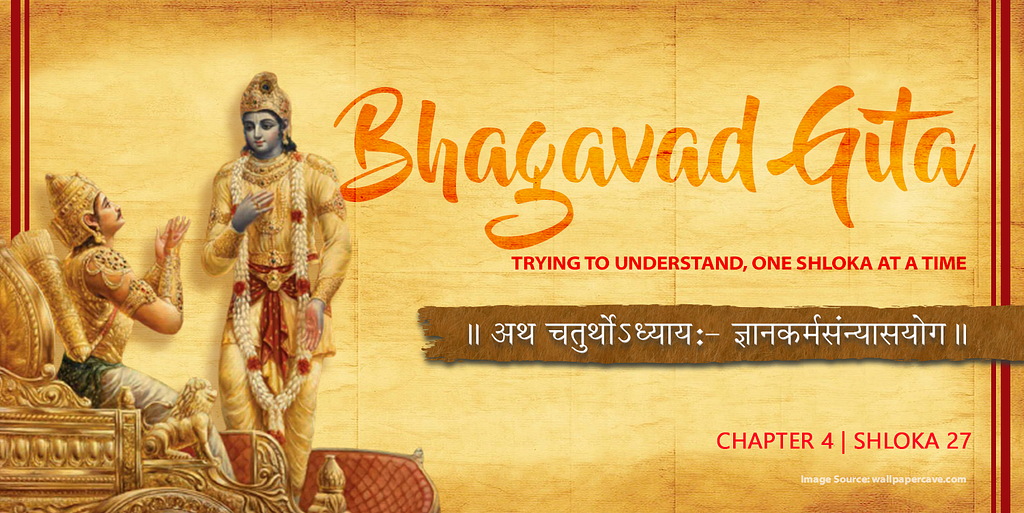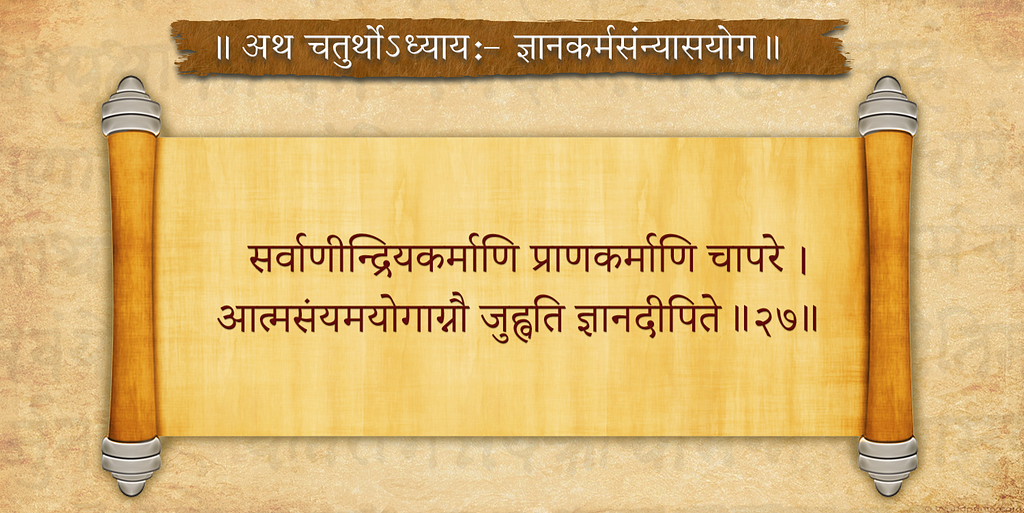H
HBR Patel
Guest
Bhagavad Gita: Understanding One Shloka at a Time. (Chp. 4, Verse 27) — HBR Patel
Trying to understand Bhagavad Gita, one Shloka at a time…

सर्वाणीन्द्रियकर्माणि प्राणकर्माणि चापरे |
आत्मसंयमयोगाग्नौ जुह्वति ज्ञानदीपिते || 27||
Others, ignited by the urge of self-realization through control of the mind and senses, offer the functions of all the senses and their action as well as the life breath as oblations into the fire of the controlled mind.

Bhagwan Shri Krishna points out to the Yogi who practice the Yagna to conquer the mind to attain communion with the ultimate consciousness. These yogis have complete control over their senses, so they aren’t attached to external things. They dedicate all their senses and bodily functions, like seeing, hearing, speaking, eating, drinking, and even breathing, as an offering.
In earlier verses, Krishna shared various methods of practicing yagna, from worshiping deities to advanced techniques like contemplating eternal essence and controlling the senses. Now, he’s explaining a more advanced technique for seekers who not only control their senses but also regulate the life forces (prana) within their bodies.
On the path of Moksha, one must direct their efforts to discipline their mind. To restrain mind, it’s crucial to rein in your senses and manage your breath. If you don’t, the powerful influence of your senses and irregularities in your health can constantly disrupt your peace of mind and delay the communion with the ultimate consciousness.
So, discipline the mind through the practice, mentioned in this shloka, practices that involve controlling their senses and regulating their breath (pranayama). This way, they become eligible to gain communion with the ultimate consciousness.
Continue reading...
